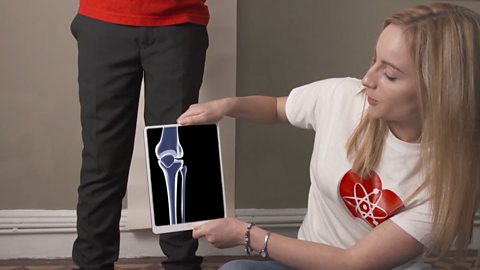PRESENTER:I have to warn, those of you with a sensitive disposition, may find the next few minutes a little embarrassing. Watch what happens when I drop this tablet into the water.
PRESENTER:Look at all those bubbles. A chemical reaction is taking place, and it's releasing carbon dioxide gas which we can see inside the bubbles.
PRESENTER:'We created an experiment to show how burps and farts work.'
PRESENTER:Now what do you think will happen if we do this inside an enclosed space, and that gas can't escape.
PRESENTER:Right, are you ready?
KIDS:Yes!
PRESENTER:Everybody pick up your lid. Now on the count of three we're going to put it in, are you ready?
KIDS:Yes.
PRESENTER:One, two, three, go! And click! That's it, click, put it upside down. Stand back, stand back! Everyone watch!
SCREAMS
PRESENTER:Step back, step back. I think that one's probably gone.
SCREAMS
PRESENTER:'When the gas builds up inside our stomach and intestines, it has to escape somewhere, either as a fart or a burp.'
PRESENTER:We don't need to be embarrassed by burps and farts, releasing excess gas is a normal process or our digestive system.
PRESENTER:'When we eat or drink, we swallow some air at the same time, and this can escape in a burp. Some of the gas passes into our intestines. The gas in our intestines eventually comes out as a fart, or flatulence. Certain types of foods, like beans and pulses, can be more difficult for our stomachs to digest than others, and create more gas.'
PRESENTER:Our food starts to be broken down, when we chew it. When it reaches our stomach, it is churned up with strong acid to break it down further.
PRESENTER:'As the food passes into our small intestine, nutrients from the digested food are absorbed into the bloodstream. Undigested particles are feasted on by microorganisms like bacteria, that live in our intestines. These bacteria are harmless to us, and actually help us by releasing further nutrients from the food. As they do this, they release gasses, and some of these can be pretty stinky.'
PRESENTER:If there's too much excess gas, it's got to escape somehow!
PRESENTER:'So, next time you accidentally fart in public remember to say, "Sorry, it wasn't me!" "It was my intestinal bacteria, and they were just doing their job!"'
Video summary
What is a burp and fart, and why do they smell?
Zoe and the class do an experiment with effervescent tablets to see the explosive effects of trying to contain carbon dioxide in a small space.
CGI graphics demonstrate how bacteria in our gut create gasses.
Zoe explains how the body, by eating and swallowing, also swallows gas that can come out of the body as a burp.
The class deflate an enormous whoopee cushion by jumping on top of it.
This short film is from the BBC series, Biological processes of the human body.
Teacher Notes
Pupils could study bacteria and how there is good and bad bacteria.
Bad bacteria can harm the body and good bacteria can help us extract nutrients from our food. Look at how industry uses bacteria to break down waste material such as recycled food, and from sewerage to create power and electricity. Compare the systems to what's happening within the human body.
Pupils could create a poster to illustrate how bacteria can create electricity.
This short film will be relevant for teaching the topic of the human body at KS2 in England, Wales and Northern Ireland and Second Level in Scotland.
Digestion - how does breakfast affect your day? video
The impact of having a healthy breakfast is explored, and a rather disgusting experiment highlights how the body gets nutrients out of food.
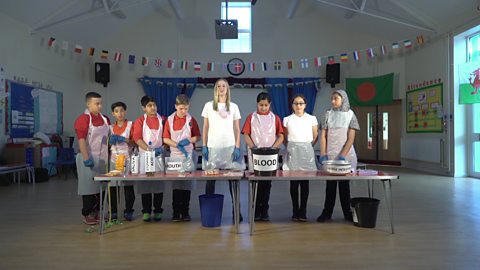
How do muscles and bones work? video
A model skeleton, elastic bands and rubber gloves are used to demonstrate how our muscles and bones allow our bodies to move.
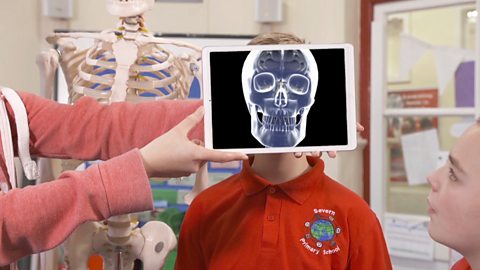
Respiration - how is oxygen transported round the body? video
Exploring how oxygen is transported around our bodies using an experiment to test lung capacity.
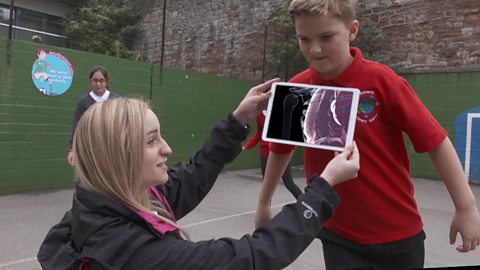
Teeth - how they help animals eat. video
How different types of animals use their teeth to help them eat their food.

How our circulatory system keeps us alive. video
Zoe uses CGI graphics to explain the structure of the heart and the difference between veins and arteries.
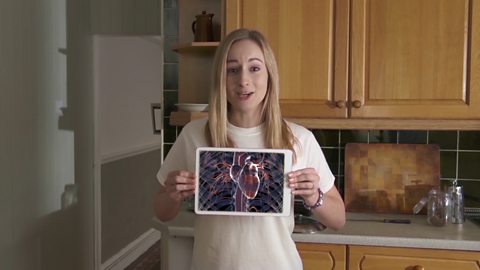
How the human body grows. video
Zoe talks us through the process of human life, using graphics to show how we grow inside the womb.
